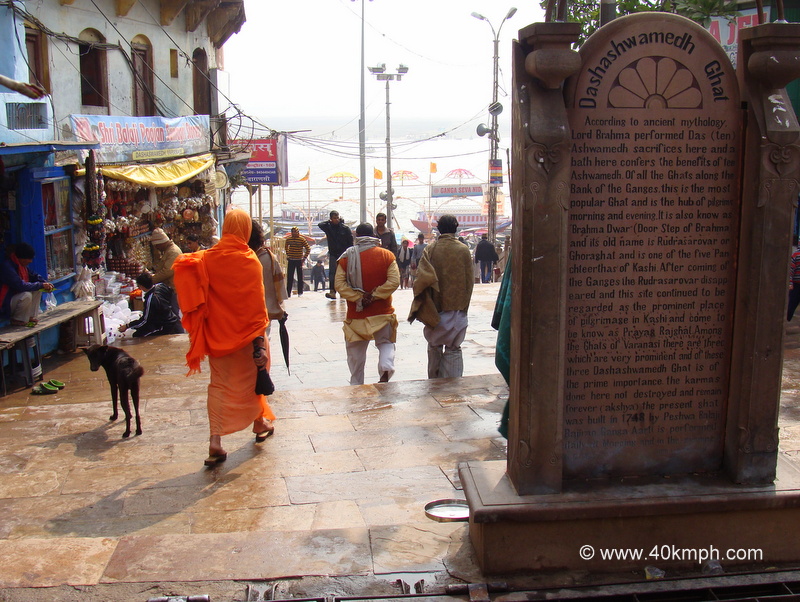According to ancient mythology, Lord Brahma performed Das (ten) Ashwamedh sacrifices here and a bath here confers the benefits of ten Ashwamedh. Of all the Ghats along the Bank of the Ganges, this is the most popular Ghat and is the hub of pilgrims morning and evening. It is also know as “Brahma Dwar” (Door Step of Brahma) and its old name is Rudrasarovar or Ghoraghat and is one of the five ‘Panchteerthas’ of Kashi. After coming of the Ganges the Rudrasarovar disappeared and this site continued to be regarded as the prominent place of pilgrimage in Kashi and come to be know as Prayag Rajghat. Among the Ghats of Varanasi there are three which are very prominent and of these three Dashashwamdh Ghat is of the prime importance. The Karmas done here not destroyed and remain forever (akshya). The present ghat was built in 1748 by Peshwa Balaji Bajirao. Ganga Aarti is performed daily at Morning and in the evening.
(Source: Uttar Pradesh tourism)
प्राचीन पौराणिक कथाओं के अनुसार, भगवान ब्रह्मा ने यहां दस (दस) अश्वमेध यज्ञ किए थे और यहां स्नान करने से दस अश्वमेधों का फल मिलता है। गंगा के किनारे के सभी घाटों में से, यह सबसे लोकप्रिय घाट है और सुबह और शाम तीर्थयात्रियों का केंद्र है। इसे “ब्रह्म द्वार” (ब्रह्मा का द्वार) के नाम से भी जाना जाता है और इसका पुराना नाम रुद्रसरोवर या घोड़ाघाट है और यह काशी के पांच ‘पंचतीर्थों’ में से एक है। गंगा के आने के बाद रुद्रसरोवर लुप्त हो गया और यह स्थान काशी में प्रमुख तीर्थस्थल माना जाता रहा और प्रयाग राजघाट के नाम से जाना जाने लगा। वाराणसी के घाटों में तीन घाट बहुत प्रमुख हैं और इन तीनों में से दशाश्वमध घाट का सर्वाधिक महत्व है। यहां किये गये कर्म नष्ट नहीं होते और सदैव अक्षय रहते हैं। वर्तमान घाट का निर्माण 1748 में पेशवा बालाजी बाजीराव ने करवाया था। गंगा आरती प्रतिदिन सुबह और शाम को की जाती है।
(English to Hindi translation by Google Translate)
